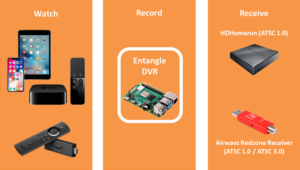Recently there’s been a lot of chatter about ATSC 3.0 broadcasts going encrypted in the not-too-distant future. We’ve actually been hearing murmurs about this for quite a while, however what seems to have set things into a flurry is a notice from Nuvyyo (i.e. Tablo) indicating that their much-anticipated ATSC 3.0 version of Tablo is being delayed – because they need to implement A3SA. A3SA is the security architecture for handling encrypted ATSC 3.0 broadcasts. Apparently Nuvyyo learned a number of broadcasters were going to flip the encryption switch at the end of summer, and (kudos to them) elected not to release a product which wouldn’t handle those encrypted services.
(Now you actually can receive and watch an encrypted service due to the way ATSC 3.0 and common encryption works. It won’t exactly be what you expect, but the psychedelic melange of greens and fuchsias can be quite, well, entertaining in its own right…)



